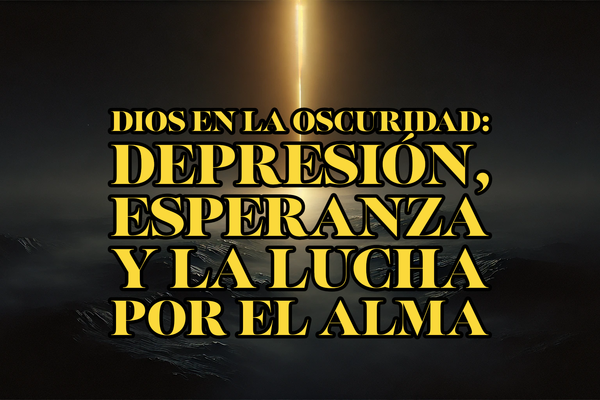Embracing Impermanence: Philosophical and Modern Insights on Death

The inevitability of death and the transient nature of life have been subjects of contemplation across various philosophical, religious, and existential traditions. From the Buddhist concept of impermanence to the Stoic practice of Memento Mori, the biblical assertion “For dust you are and to dust you shall return” (Genesis 3:19), and the Existentialist exploration of mortality, these perspectives offer profound insights into how contemplating death can enrich our lives. This article delves into these diverse views, revealing that thinking about death need not be morbid but can instead lead to a richer, more meaningful existence. By examining these different philosophies, alongside reflections from notable public figures and modern spiritual teachers, we can gain a deeper understanding of how to confront our mortality with grace and wisdom.
Buddhist View of Impermanence and Death
In Buddhism, impermanence, or Anicca, is a fundamental concept that underpins the entire philosophy. It teaches that all things, whether physical or mental, are in a constant state of flux. This understanding extends to life and death, viewing death not as an end but as a transition. The Buddha’s teachings emphasize the transient nature of existence, encouraging followers to accept change and the inevitability of death as part of the natural order. This perspective aims to reduce attachment and suffering, helping individuals live with greater peace and equanimity.
One of the core teachings of Buddhism is the Four Noble Truths, which highlight the nature of suffering (Dukkha) and the path to its cessation. The understanding of impermanence is crucial in this context, as clinging to impermanent things is seen as a primary cause of suffering. By embracing the transient nature of life, Buddhists believe they can achieve a state of non-attachment, leading to a more serene existence.
Buddhist practices such as meditation and mindfulness are designed to help practitioners internalize the concept of impermanence. Meditation on death, or Maranasati, is a specific practice that involves contemplating one’s mortality to foster a deeper appreciation for life and a sense of urgency in pursuing spiritual goals. This practice is not intended to be morbid but to provide clarity and focus, reminding practitioners that life is precious and fleeting.
Teachings from notable Buddhist texts and teachers further illuminate this view. For instance, the Dhammapada, a collection of sayings attributed to the Buddha, repeatedly emphasizes the impermanent nature of all things. Similarly, contemporary Buddhist teachers like Thich Nhat Hanh and Pema Chödrön have written extensively about embracing impermanence as a path to inner peace.
Zen Perspective on Impermanence
Zen Buddhism offers a unique perspective on impermanence, emphasizing the importance of living fully in the present moment. In Zen practice, impermanence is not just an abstract concept but a lived experience that can be directly encountered through meditation and mindfulness.
One of the key teachings in Zen is the idea of “no-self” or Anatta, which suggests that the self is not a fixed, permanent entity but a collection of constantly changing processes. This understanding aligns with the broader Buddhist view of impermanence, encouraging practitioners to let go of attachments and embrace the fluid nature of existence.
Zen meditation, or Zazen, is a practice that helps individuals experience impermanence firsthand. By sitting in meditation and observing their thoughts and sensations, practitioners can gain insight into the transient nature of all phenomena. This practice is intended to cultivate a state of presence and awareness, allowing individuals to experience each moment fully without clinging to the past or fearing the future.
Zen masters often use paradoxical sayings or Koans to challenge conventional thinking and deepen their students’ understanding of impermanence. For example, the famous Koan, “What is the sound of one hand clapping?” encourages practitioners to move beyond dualistic thinking and experience reality directly.
The Zen approach to death is similarly grounded in the practice of mindfulness and presence. Rather than fearing death or seeing it as something to be avoided, Zen practitioners are taught to accept it as a natural part of life. This acceptance is not passive resignation but a profound acknowledgment of the interconnectedness of all things.
Memento Mori and the Stoic View
Memento Mori, a Latin phrase meaning “remember you will die,” is a central concept in Stoic philosophy. The Stoics believed that regularly contemplating death could lead to a more virtuous and fulfilling life. By keeping the inevitability of death in mind, they argued, individuals could better appreciate the present moment and focus on living in accordance with their values.
Stoic philosophers like Marcus Aurelius and Seneca wrote extensively about the benefits of reflecting on mortality. In his “Meditations,” Marcus Aurelius advised contemplating death to cultivate humility and perspective. He saw this practice as a way to remind oneself of the fleeting nature of life and the importance of living in harmony with the universe.
Seneca, in his letters, encouraged his readers to view each day as a gift and to live as if each moment could be their last. This mindset, he believed, would lead to greater appreciation for life and a stronger commitment to personal growth and ethical behavior. For the Stoics, the contemplation of death was not a morbid fixation but a practical exercise to foster resilience, gratitude, and a deeper sense of purpose.
The Stoic practice of Memento Mori involves various exercises, such as visualizing one’s own death or reflecting on the deaths of historical figures. These practices are intended to cultivate a sense of urgency and a clear understanding of what is truly important in life. By confronting the reality of death, the Stoics believed, individuals could free themselves from the fear of the unknown and live more authentically.
Existentialist Philosophers on Death
Existentialist philosophers like Jean-Paul Sartre, Martin Heidegger, and Albert Camus have profoundly influenced modern thought on death and impermance. Their perspectives offer a nuanced understanding of mortality, emphasizing the individual’s role in creating meaning in an indifferent universe.
Jean-Paul Sartre
Jean-Paul Sartre, a leading figure in existentialism, viewed death as a fundamental aspect of human existence. He argued that the awareness of our mortality forces us to confront the absurdity of life and the freedom that comes with it. According to Sartre, death is the ultimate limit situation, a concept that shapes our understanding of existence and compels us to take responsibility for our choices.
In “Being and Nothingness,” Sartre described how the inevitability of death reveals the contingency of our lives. This recognition can liberate us from societal norms and expectations, enabling us to live more authentically. By accepting our mortality, we can break free from the illusion of permanence and embrace the freedom to define our own existence.
Martin Heidegger
Martin Heidegger’s exploration of death is central to his existential philosophy. In “Being and Time,” Heidegger introduced the concept of “Being-towards-death” (Sein-zum-Tode), which describes the individual’s relationship with their own mortality. Heidegger argued that an authentic existence requires a constant awareness of death, which he termed “authentic being-towards-death.”
Heidegger believed that most people live in a state of “fallenness,” where they are absorbed in everyday distractions and fail to confront their own mortality. By acknowledging the inevitability of death, individuals can break free from this inauthentic mode of being and live more fully. This existential confrontation with death encourages a deeper engagement with life and a more profound sense of purpose.
Albert Camus
Albert Camus, another prominent existentialist, explored the theme of the absurd — the conflict between humans’ desire for meaning and the indifferent universe. In “The Myth of Sisyphus,” Camus argued that life is inherently meaningless, but this recognition does not lead to despair. Instead, Camus suggested that we embrace the absurdity of existence and find joy in the struggle itself.
Camus viewed death as a fundamental aspect of the human condition, one that highlights the absurdity of life. He believed that by accepting the lack of inherent meaning, we can create our own purpose and live more authentically. Camus’ philosophy encourages a defiant yet joyful approach to life, where the acceptance of death enhances our appreciation for the present moment.
Biblical Perspective: “For dust you are and to dust you shall return” (Genesis 3:19)
The biblical view of death, as expressed in Genesis 3:19, offers a different perspective from the philosophical approaches discussed so far. This passage, part of God’s pronouncement to Adam after the fall, underscores the transient nature of human life and the inevitability of death: “For dust you are and to dust you shall return.”
Theological Implications
This verse reflects the biblical understanding of human mortality and the consequences of sin. According to Christian theology, death entered the world as a result of Adam and Eve’s disobedience in the Garden of Eden. The passage serves as a reminder of the frailty of human life and the return to the earth from which we were formed.
The phrase “dust to dust” has significant theological implications. It emphasizes the humility and dependence of human beings on God, acknowledging our origins and our ultimate return to the earth. This perspective fosters a sense of humility and the recognition of our place within the broader context of creation.
Comparison with Other Philosophies
When compared to the views of Buddhism, Stoicism, Zen, and Existentialism, the biblical perspective shares some common themes but also presents unique differences. Like these other philosophies, the biblical view acknowledges the inevitability of death and the transient nature of life. However, it frames this understanding within a theological context, emphasizing the relationship between humanity and the divine.
While existentialist and Stoic philosophies encourage individuals to create their own meaning in the face of death, the biblical perspective points to a divinely ordained purpose and the hope of eternal life. This hope contrasts with the existentialist acceptance of absurdity and the Stoic focus on virtuous living within a finite lifespan.
Comparing Philosophical Views on Death
Common Themes
Despite their differences, the perspectives discussed — Buddhism, Zen, Stoicism, Existentialism, and the Biblical view — share several common themes:
- Acceptance of Impermanence:All these philosophies acknowledge the transient nature of life and the inevitability of death. They encourage acceptance rather than denial of mortality.
- - Transformation through Contemplation:Each tradition suggests that contemplating death can lead to personal growth, greater clarity, and a deeper appreciation for life.
- Living Authentically:Whether through mindfulness, virtue, or existential freedom, these philosophies advocate for living in a manner true to one’s values and purpose.
Unique Differences
However, each perspective also offers unique insights and practices:
- Buddhism and ZenFocus on mindfulness, non-attachment, and direct experience of impermanence through meditation.
- Stoicism: Emphasizes virtuous living and the practical benefits of contemplating death (Memento Mori).
- Existentialism**: Highlights the freedom to create personal meaning in an indifferent universe and the importance of living authentically.
- Biblical View**: Frames mortality within a theological context, emphasizing human dependence on God and the hope of eternal life.
Public Figures’ Views on Death
Steve Jobs
Steve Jobs’ reflections on death, as expressed in his 2005 Stanford commencement address, provide a compelling modern perspective. Jobs described death as “the single best invention of life,” underscoring its role in driving change and renewal. His own experience with a cancer diagnosis profoundly influenced his outlook, making him more focused on living authentically.
Jobs urged his audience to live each day as if it were their last, a sentiment that echoes Stoic and existentialist ideas. By keeping death in mind, Jobs believed one could strip away the fear of failure and societal expectations, focusing instead on what truly matters. His message resonates with the practice of Memento Mori and the existentialist emphasis on personal freedom and authenticity.
Christopher Hitchens
Another notable figure who offered profound insights into death was Christopher Hitchens. Diagnosed with esophageal cancer, Hitchens faced his mortality with characteristic wit and intellectual rigor. In his memoir, “Mortality,” Hitchens chronicled his experience with illness and the contemplation of death.
Hitchens, an atheist and skeptic, approached death from a secular perspective, yet his reflections align with philosophical themes of accepting impermanence and finding meaning in the face of death. He emphasized the importance of living fully and truthfully, even when confronted with the end of life. Hitchens’ approach demonstrates that the contemplation of death can lead to a deeper appreciation for life, regardless of religious or spiritual beliefs.
Alan Watts and Ram Dass on Death and Impermanence
Alan Watts
Alan Watts, a British philosopher and writer, is renowned for his interpretations of Eastern philosophies, particularly Zen Buddhism. Watts often spoke about the nature of death and impermanence, challenging Western notions of death as something to be feared. He encouraged a view of death as a natural process, akin to falling asleep or the changing of seasons.
Watts argued that the fear of death arises from a misunderstanding of the self. He believed that recognizing the interconnectedness of all things and the illusory nature of the ego could alleviate this fear. In his lectures and writings, Watts invited people to embrace death as a return to the natural state, a dissolution into the universe.
Ram Dass
Ram Dass, formerly known as Richard Alpert, was a prominent spiritual teacher who integrated Eastern spiritual practices with Western psychology. His book “Be Here Now” and subsequent works explore themes of consciousness, spirituality, and death. Ram Dass viewed death as a profound transformation, a transition rather than an end.
He encouraged people to see death as part of a larger spiritual journey, emphasizing the importance of living in the present moment and preparing for death through spiritual practice. Ram Dass’ teachings, like those of Watts, highlight the potential for death to serve as a catalyst for deeper spiritual awakening and personal growth.
Confronting Death Without Fear
The idea that contemplating death is morbid is challenged by these diverse philosophical and personal perspectives. Instead, thinking about death can lead to a more meaningful and present-focused life. Here are some practical ways to approach this contemplation in a healthy and constructive manner:
- Meditation and Mindfulness**: Practices such as meditation and mindfulness can help cultivate a deeper awareness of impermanence. By observing thoughts and sensations without attachment, individuals can learn to accept the transient nature of life and death.
- Gratitude Practices**: Reflecting on the temporality of life can enhance gratitude for each moment. Keeping a gratitude journal or taking time each day to appreciate small joys can foster a more positive and present-focused mindset.
- Living Authentically**: Inspired by figures like Steve Jobs and philosophical teachings, individuals can prioritize their passions and values. This might involve making career changes, spending more time with loved ones, or pursuing long-held dreams.
- Study and Reflection**: Reading works by philosophers and spiritual teachers can provide deeper insights into the nature of death and impermanence. Reflecting on these teachings can help integrate their wisdom into daily life.
- Community and Support**: Engaging in discussions with others about death and impermanence can provide support and different perspectives. Joining a meditation group, attending philosophical discussions, or participating in a book club can offer a sense of community and shared understanding.
By embracing these practices, we can transform our relationship with death from one of fear to one of acceptance and enlightenment. Recognizing our mortality can bring a heightened sense of purpose and a deeper appreciation for the fleeting beauty of life.
Exploring impermanence and death through the lenses of Buddhism, Zen, Stoicism, Existentialism, and the reflections of public figures reveals a profound truth: contemplating our mortality is not an exercise in morbidity but a pathway to living more fully. Each of these perspectives offers valuable insights into how we can embrace the transient nature of life, leading to greater clarity, purpose, and peace.
Buddhism teaches us to accept impermanence and reduce suffering through non-attachment. Stoicism, with its practice of Memento Mori, encourages us to live virtuously and appreciate each moment. Zen Buddhism, through mindfulness and meditation, guides us to experience life fully in the present. Existentialism challenges us to create our own meaning in the face of an indifferent universe. The biblical perspective reminds us of our origins and ultimate return to dust, emphasizing humility and dependence on a higher power. Public figures like Steve Jobs and Christopher Hitchens, along with spiritual teachers like Alan Watts and Ram Dass, provide modern reflections that resonate with these timeless philosophies.
By integrating these teachings into our lives, we can confront death without fear, transforming it into a source of enlightenment and personal growth. Embracing our mortality allows us to strip away distractions and focus on what truly matters, enriching our lives with purpose and presence.
In the end, contemplating death helps us to live more deeply, appreciate the beauty of each moment, and approach life with a sense of gratitude and wonder. As we navigate the inevitable changes and transitions of life, these philosophical insights provide a roadmap for living with wisdom, compassion, and joy.



